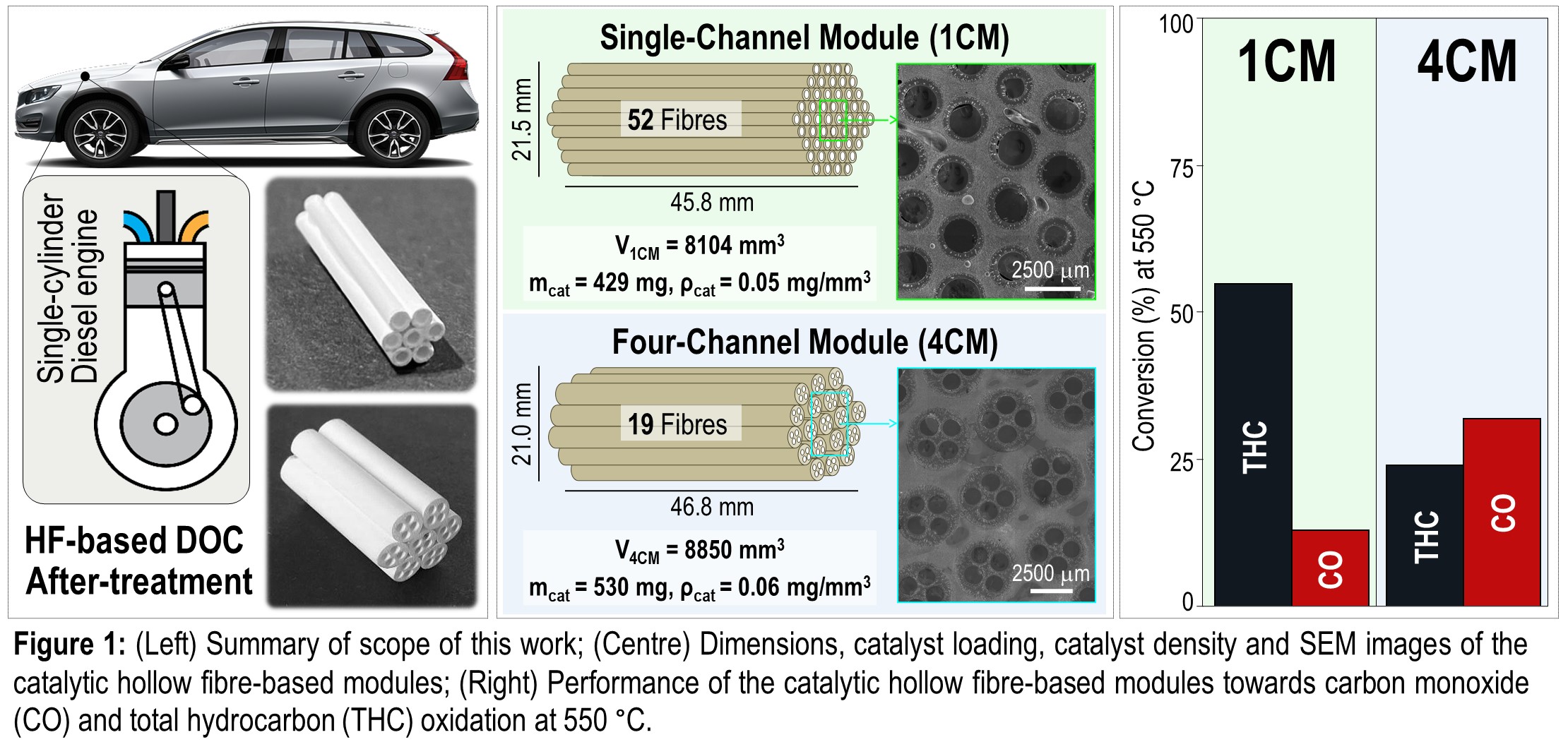(512h) Revolutionising Catalytic Converters: Non-PGM Hollow Fibre-Based Technology for Enhanced Performance in Real Diesel Exhaust Gas Environments
AIChE Annual Meeting
2024
2024 AIChE Annual Meeting
Catalysis and Reaction Engineering Division
Environmental and Automotive Catalysis
Wednesday, October 30, 2024 - 2:18pm to 2:36pm
Addressing this need, this work highlights catalytic hollow fibre (HF)-based technologies as an innovative alternative to conventional after-treatment technologies, focusing on non-PGM Diesel Oxidation Catalysts (DOCs). Our previous studies have demonstrated that HF-based reactors offer significant advantages over traditional technologies, attributed to their unprecedented surface-area-to-volume ratios, low pressure drops and minimised internal and external mass transfer limitations [1].
This work involves the synthesis, characterisation and performance of a series of copper-doped lanthanum cobaltite catalysts of various copper loadings, which were synthesised via three different approaches, with the purpose of identifying the optimal catalyst for impregnation in the HFs. Subsequently, the performance of two HF-based modules, comprising single-channel (i.e., 1CM) and four-channel (i.e., 4CM) HFs respectively, was tested under real exhaust gas from a single-cylinder diesel engine. It was shown that the 4CM was associated with enhanced carbon monoxide conversion efficiencies, and reduced total hydrocarbon conversion efficiencies, compared to the 1CM.
Therefore, this study sheds light on the crucial impact of HF morphology on catalytic performance, while also validating the efficacy of catalytic HF-based technologies under real conditions. The significance of these findings is in demonstrating the potential for HF morphology to be optimised, via its fabrication, in order to achieve selective reaction enhancement. Overall, this marks a significant step towards the advancement of catalytic HF-based technologies, which in turn, offers a feasible route towards the adoption of non-PGM catalytic systems in emission control.
References
[1] M. García-Vázquez, G. Zhang, Z. Hong, X. Gu, F.R. García-García, Chem. Eng. J. 396 (2020).
